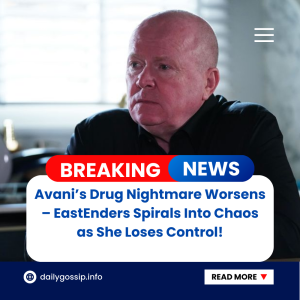This “movie” plunges us into the heart of Walford, as a catastrophic explosion rips through the iconic Queen Victoria pub, forever altering the lives of its residents. The film opens with a sense of foreboding, hinting at the impending disaster. We see the bustling activity inside the Vic, with various characters interacting, their lives seemingly ordinary and intertwined. The film subtly establishes the importance of the Queen Vic as the central hub of the community, a place of celebration, conflict, and refuge.
As the explosion occurs, the film shifts to a visceral and chaotic portrayal of the event. There’s a rapid succession of shots: the ground shaking, debris falling, screams of terror, and the once-familiar pub transforming into a scene of devastation. Amidst this chaos, the narrative hones in on Martin Fowler and Stacey Slater, two characters with a long and complex history, highlighting their enduring bond.
Martin and Stacey find themselves trapped within the collapsing structure, their initial instinct to protect each other. The film emphasizes their desperation to escape, showcasing their physical struggle against the wreckage. There’s a brief moment of hope, a sense that they might actually make it out alive and have a chance to rekindle their relationship. This hope, however, is quickly and brutally extinguished.
In a cruel twist of fate, just as they are about to reach safety and the possibility of a renewed life together, tragedy strikes. A massive beam, a symbol of the pub’s history and solidity, plummets from the ceiling, crushing Martin. The film portrays this moment in excruciating detail, lingering on the visual horror of the beam falling and the immediate, devastating impact on Martin. The soundtrack amplifies the drama, with a sudden silence followed by the sounds of splintering wood and Martin’s agonized cry (if the show included it). This scene is designed to shock and traumatize the audience, emphasizing the suddenness and finality of death.
Martin dies shortly after, not from the immediate impact, but from the insidious effects of crush syndrome. The film depicts the brutal reality of his death: as the beam is lifted, and rescuers desperately try to save him, a surge of toxins floods his system. The film explains, perhaps through dialogue or visual cues, how the trapped blood releases harmful substances into his circulation, leading to rapid and irreversible organ failure. His death is not peaceful or serene; it’s a visceral and shocking end, a medical tragedy that underscores the fragility of life.
The aftermath of Martin’s death forms the core of the film’s emotional narrative. Stacey is left utterly devastated, her world shattered beyond recognition. The film emphasizes the depth of her loss, portraying her grief as all-consuming and life-altering. We see her in the immediate aftermath, perhaps in a state of shock and disbelief, unable to process the reality of what has happened. There are scenes of her at the hospital, or at home, in a daze, surrounded by well-meaning but ultimately inadequate attempts at comfort.
The film doesn’t shy away from depicting the physical and emotional toll of grief. Stacey is shown struggling with daily tasks, unable to eat or sleep, haunted by flashbacks of Martin. Her grief isolates her, creating a barrier between her and the world. The film portrays her pain as a raw, open wound, refusing to offer easy answers or quick resolutions.
We see the community reeling from the tragedy, with the Queen Vic, once a symbol of life and continuity, now a site of mourning and loss. But even amidst this collective grief, Stacey’s pain is the focal point. The film suggests that while others are also affected, Stacey’s connection to Martin, their shared history and the possibility of a future together, makes her loss uniquely profound.

In the wake of this tragedy, Gene steps up to help Stacey with the immense responsibility of caring for her children: Lily, Arthur, and Hope. The film highlights the burden placed on Gene, who is forced to become a surrogate parent while grappling with her own grief and the general chaos in Walford. There are scenes of Gene struggling to maintain order, to provide emotional support to the children, and to manage the practicalities of daily life, all while dealing with her own sorrow.
Lily, already struggling to process her father’s death and perhaps feeling abandoned or neglected in the midst of the family crisis, begins to exhibit increasingly destructive behavior. The film portrays her as a teenager on the edge, acting out in defiance and turning to unhealthy coping mechanisms. We see her spending time with Avani, seeking solace and perhaps a sense of belonging outside her family. Her experimentation with substance abuse (smoking weed) is depicted not as casual rebellion, but as a desperate attempt to self-medicate her pain and anger.
This subplot serves to illustrate the wider impact of Martin’s death, showing how it ripples through the younger generation and destabilizes family dynamics. Lily’s actions are a manifestation of her unprocessed grief, her inability to articulate her feelings, and the lack of support she perceives in her shattered family.
As Stacey withdraws into her grief, becoming increasingly isolated and unreachable, Sonia Fowler becomes a crucial source of support. The film depicts Sonia’s growing concern for Stacey, leading her to actively seek her out, even when others might hesitate or feel inadequate. Gene and Harvey, who are on the front lines of dealing with Stacey’s immediate needs and the children’s well-being, reveal the extent of Stacey’s struggle. They emphasize that she is not “coping,” that she is in danger of being completely overwhelmed by her sorrow and potentially succumbing to a complete emotional breakdown.
Sonia, who is dealing with her own set of problems and is perhaps more emotionally resilient or has a better understanding of grief, finds a way to connect with Stacey. In a powerful and intimate sequence, Sonia manages to break through Stacey’s isolation. The film portrays their interaction as a turning point, a moment of genuine human connection in the midst of overwhelming sadness. Sonia offers a non-judgmental ear, allowing Stacey to express her pain without feeling judged or pressured to “move on.” She provides practical advice, perhaps helping Stacey with daily tasks or connecting her with support services, and offers comfort, a simple human presence that reminds Stacey she is not alone.
Actress Lacey Turner, who plays Stacey, describes Sonia’s role as pivotal, emphasizing that Sonia provides a lifeline for Stacey in her darkest hour. This scene is crucial in highlighting the importance of female friendship and community support in times of tragedy.
The film makes it clear that Stacey’s journey is far from over. As one character poignantly observes, “I don’t think she’ll ever get over losing Martin.” Their relationship, even during periods of separation and conflict, is portrayed as a defining force in Stacey’s life. Martin was not just a husband or partner; he was a constant presence, a source of love, stability, and connection to her past. The film suggests that Stacey will be forever changed by Martin’s death, that she will carry this loss with her for the rest of her life.
Her path forward will involve learning to live with this profound loss, not to “get over it,” but to integrate it into her identity and find a way to rebuild her life, primarily for the sake of her children. The narrative emphasizes the long and arduous process of healing, highlighting the ongoing challenges Stacey faces as she tries to navigate her grief, care for her family, and find a new sense of purpose in a world without Martin.





